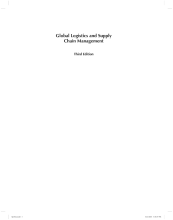Risk & Insurance - Insurance in EU
15 important questions on Risk & Insurance - Insurance in EU
What is the new solvency II legislation?
What is the risk profile of the solvency II legislation?
-Liquidity risk
- Credit risk
- Market risk
- Strategic risk
-Other operational risks
How did the premium change after the Solvency II legislation?
It still covers insurer's costs (admin, taxes,..)
Generates insurer's profit margin
It is a reward taking over risk.
With the solvency II legislation there are higher premiums which means that there are more captives.
- Higher grades + faster learning
- Never study anything twice
- 100% sure, 100% understanding
Which 2 types of claims are there?
- Calamity risks= Huge disasters, difficult to quantify. These can't be borne by a single insurer.
What is a captive insurer?
There are 2 types:
- Captive insures its own group
- Captive insures external customers.
What are the benefits of a captive insurer?
- Part of premiums kept @ the company
-Only own risk
- Easier compliance & capital requirements
- Good knowledge of own data
- Potential tax benefits
- Premium = cost factor
- Captives often based in tax havens (LUX, IRL, Channel Islands, Bermuda, …)
- Positive impact on prevention & awareness
- No broker’s fees to be paid
What are the downsides of a captive insurer?
- High capital requirements (Solvency II)
- High cost of creating a new company (Captive)
- Financial Risk
- Knowledge of insurance available?
- Statistics available?
- Tax benefits uncertain
- Only beneficial for large
corporates (premiums > 250k €)
What 3 clusters should a company insure?
business interruption.
2. Personal risks: e.g. Shop floor accident cover, health insurance, …
3. Liability:e.g. Product liability, Director’s & officer’s Liability, product liability, …
What is a business interruption ?
What are some types of good insurances?
- Burglary
- Computers
- Transport
- Storage of goods
- Casco: ships & barges, airplanes, trains, lorries, …: vehicle + equipment is covered
- Travel insurance
What does the fire insurance cover?
- Real estate or movable property are covered
-Crops on the field
- The probability is small but the severity may be huge= Calamity risk
Why is a car insurance so special?
- Object: car itself
- Liability: Insurance for damage to third persons
- Personal: Insurance for wounds, concussions, death,..
What types of liability insurances are there?
- Environmental liability
- Professional liability
- Product liability
- Directors liability
- Liability for entrtusted objects
Explain the liability for entrusted objects
How to analyse an insurance?
2. Create a checklist with all insurances types and check which one could be relevant to the firm
3. Make a functional overview per department
4. Check budget and priorities
The question on the page originate from the summary of the following study material:
- A unique study and practice tool
- Never study anything twice again
- Get the grades you hope for
- 100% sure, 100% understanding






























